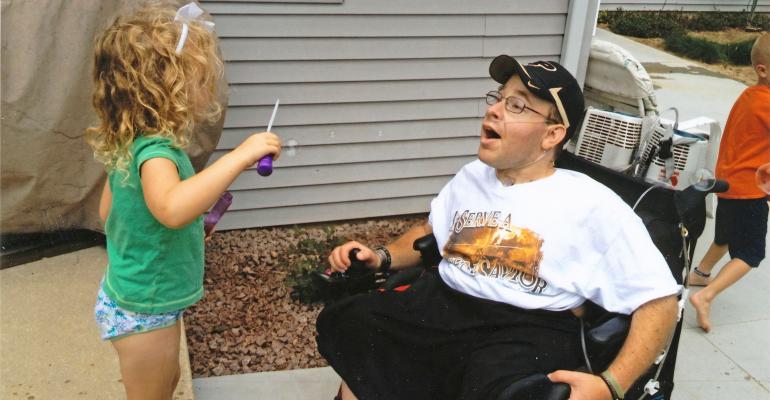
INSPIRATIONAL STORY: Darrell Boone, who occasionally writes for Indiana Prairie Farmer, shares an inspirational story about his son’s life in a book he recently published.
“After he passed away a couple years ago, friends suggested I share his story,” Darrell says. “I wasn’t sure at first, but I finally decided to do it.”
That’s why you haven’t seen Darrell’s byline as much lately. He took time off to write a book telling the unbelievable story of his son’s life and his family’s journey with him. Now that the book is finished, you will see his name on ag stories again.
The result of Darrell’s writing is “He Made Us Better: A Story of Faith, Family, Friends (and Football).” The book is available online, in softcover or hardcover or as an e-book from both Amazon and Barnes and Noble. Simply visit the website of your choice and search for “Darrell Boone” or the title of the book.
Courage and more
You likely know of children born with spina bifida today. But Peter Boone was born more than 40 years ago. The technology that exists today didn’t exist then. Darrell and Sandra had no idea that their baby wouldn’t be normal. They had no time to prepare for the shock and what it would mean in advance.
Several of the doctors who helped Peter through the years and which Darrell wrote about in the book were doing cutting-edge work. Some of them made appearances on national TV shows because of their work.
Mainstreaming children with severe disabilities wasn’t matter-of-fact back then. Darrell explains their apprehension as Peter approached school age, only to find that administrators and teachers at rural Southwood Elementary in Wabash County were extremely receptive. At Southwood and at many other places later in his life, Peter was the first person with this disability or in a wheelchair that many people dealt with.
I won’t give away the whole story. But suffice it to say, Peter had more than 80 surgeries in his life and was on the brink of death many times — yet he survived to attend his prom, graduate from high school, drive his own van, complete two years of college and become a full-time member of the Southwood High School faculty.
I’ll leave both the tear-jerking and humorous moments for you to discover. This is one book you must read. You’ll never look at people with disabilities or the caregivers who assist them in the same way again.




